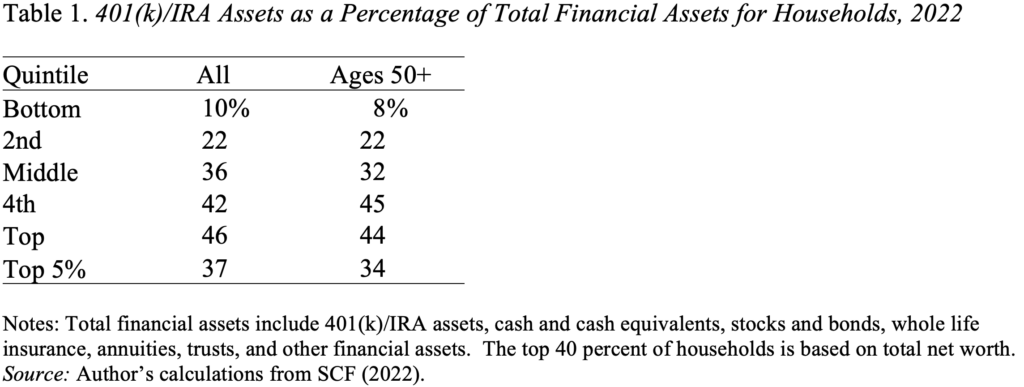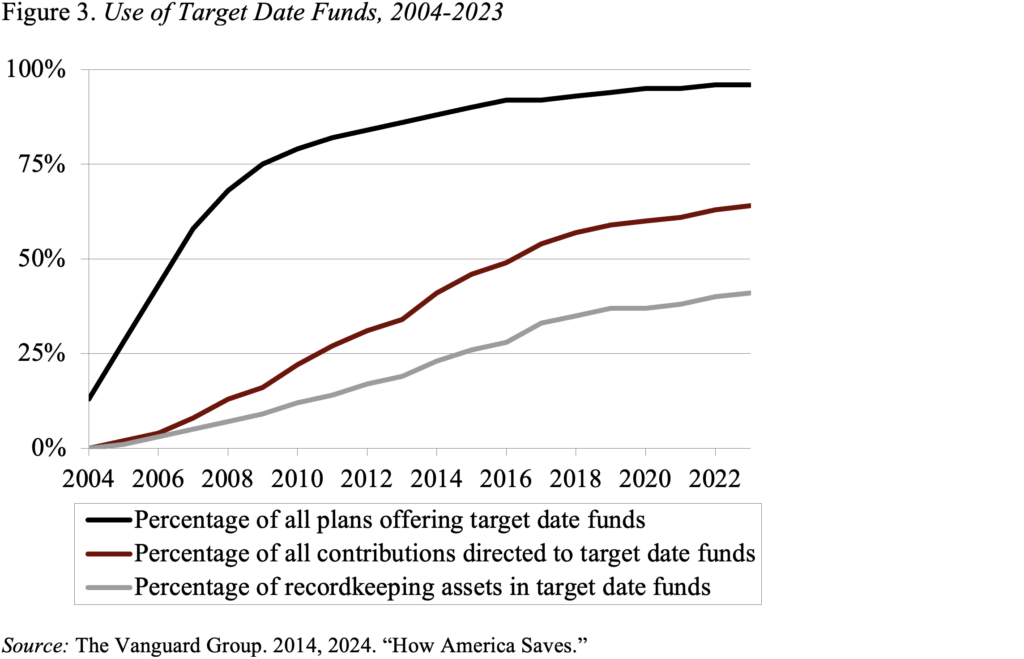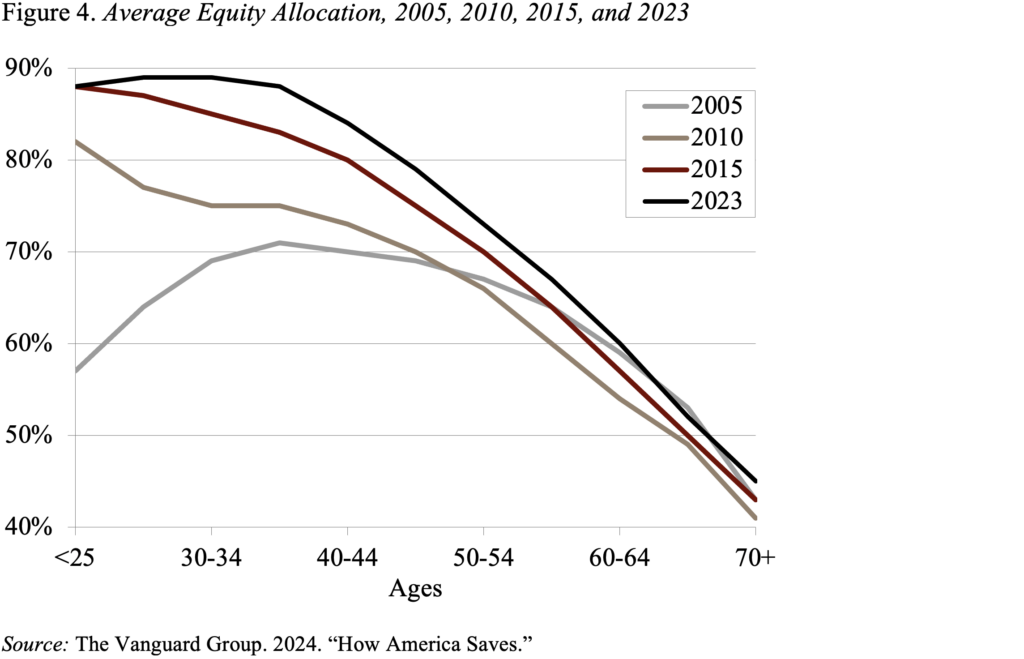I suspected most monetary belongings have been in 401(ok) plans and most 401(ok) holdings have been directed by target-date funds, however the knowledge instructed a considerably totally different story.
When attempting to determine folks’s style for danger by trying on the share of equities of their monetary portfolio, I used to be questioning in a world of 401(ok)s concerning the extent to which this share would all be decided by the sample of goal date funds. Candidly, my prior was that, for all besides the very wealthy, most family monetary belongings have been in 401(ok)s and that almost all 401(ok) belongings have been in goal date funds. It’s at all times helpful, nevertheless, to have a look at slightly knowledge. It seems that my state of affairs will not be fairly the place we at the moment are, however may describe the place we’re headed.
The notion was not a loopy one in that the 2020s symbolize the primary time that employees may have spent a complete profession coated by a 401(ok) plan. Certainly, solely about 16 % of households approaching retirement in 2022 are relying primarily on an outlined profit plan (see Determine 1). That evolution suggests that almost all retirement saving could now be in 401(ok)s or Particular person Retirement Accounts (IRAs).
So, the query is what share of monetary belongings are 401(ok)/IRA balances? These percentages for 2022 by internet value quintile present that for the highest two quintiles – the highest 40 %, who maintain many of the 401(ok) belongings – retirement belongings account for about 45 % of whole monetary belongings (see Desk 1). The richest 5 % cut back the share for the highest quintile as an entire as a result of they maintain a lot in non-retirement belongings. However, the odds are considerably lower than I had hypothesized.

If the scenario was not precisely what I assumed, are we at the very least trending in that path? Certainly, the share has elevated sharply over time, albeit it’s not clear the place it’s going from right here (see Determine 2).

It looks as if I used to be additionally slightly forward when it comes to the function of goal date funds (TDFs) – funds that mechanically cut back fairness holdings as contributors age – inside 401(ok)s. It isn’t shocking provided that the massive change got here when the Pension Safety Act of 2006 allowed plan sponsors to mechanically enroll workers utilizing TDFs because the default funding. Since then, the share of plans providing, the share of contributions directed towards, and the share of belongings in TDFs have all been rising quickly (see Determine 3).

Funding in TDFs has modified the profile of asset allocation and elevated holdings in equities (see Determine 4). In 2005, the allocation of equities was hump-shaped; youthful contributors have been extra conservative, middle-age contributors held probably the most equites and older contributors sharply diminished their holdings. In 2023, the fairness allocation of contributors sloped downward by age, beginning at 88 % for younger employees, declining to 73 % for these ages 50-54 after which to 45 % for these 70+. Not solely is the sample very totally different, however the share of 401(ok) belongings in equities has additionally elevated markedly.

So, the story wasn’t as clear as I had thought. For these within the prime 40 % of the wealth distribution, retirement belongings are solely about 45 % of whole belongings and the share appears steady. Inside 401(ok) plans the significance of goal date funds has been rising over time and is prone to be much more vital sooner or later. Then again, folks have a tendency to maneuver their belongings out of 401(ok) plans into IRAs and should change their allocations. So, I assume that individuals train extra discretion over their fairness holdings than I assumed.
